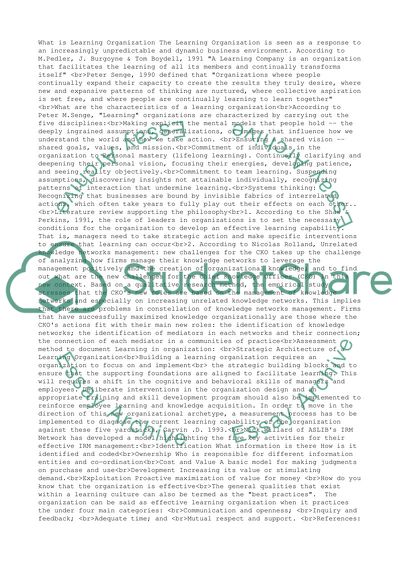Philosophy of a learning organization Essay Example | Topics and Well Written Essays - 500 words. Retrieved from https://studentshare.org/business/1500241-philosophy-of-a-learning-organization
Philosophy of a Learning Organization Essay Example | Topics and Well Written Essays - 500 Words. https://studentshare.org/business/1500241-philosophy-of-a-learning-organization.


